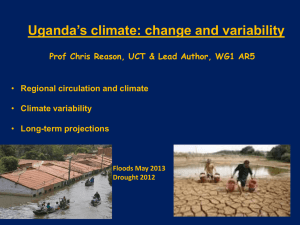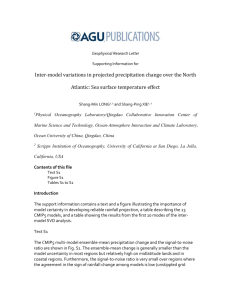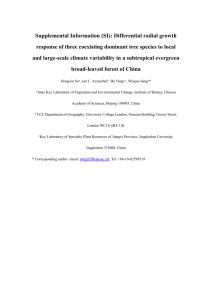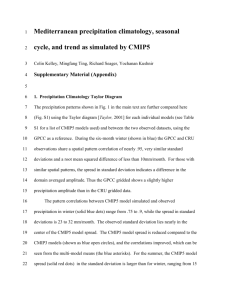Tropical precipitation anomalies following the 1991 Pinatubo
advertisement
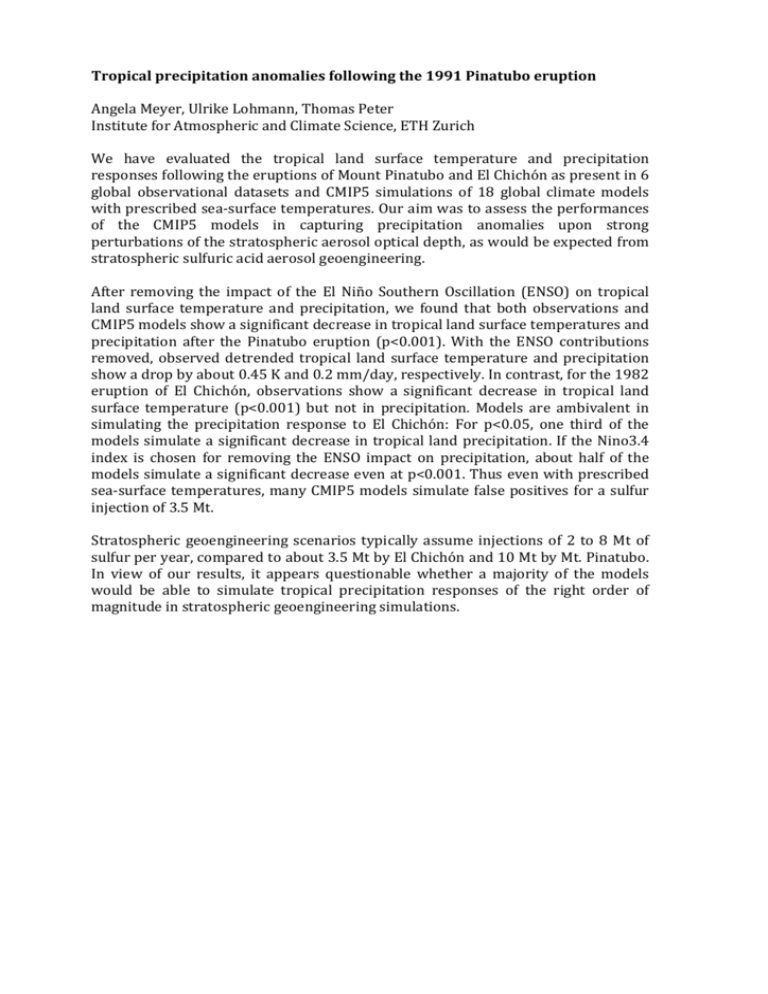
Tropical precipitation anomalies following the 1991 Pinatubo eruption Angela Meyer, Ulrike Lohmann, Thomas Peter Institute for Atmospheric and Climate Science, ETH Zurich We have evaluated the tropical land surface temperature and precipitation responses following the eruptions of Mount Pinatubo and El Chichón as present in 6 global observational datasets and CMIP5 simulations of 18 global climate models with prescribed sea-surface temperatures. Our aim was to assess the performances of the CMIP5 models in capturing precipitation anomalies upon strong perturbations of the stratospheric aerosol optical depth, as would be expected from stratospheric sulfuric acid aerosol geoengineering. After removing the impact of the El Niño Southern Oscillation (ENSO) on tropical land surface temperature and precipitation, we found that both observations and CMIP5 models show a significant decrease in tropical land surface temperatures and precipitation after the Pinatubo eruption (p<0.001). With the ENSO contributions removed, observed detrended tropical land surface temperature and precipitation show a drop by about 0.45 K and 0.2 mm/day, respectively. In contrast, for the 1982 eruption of El Chichón, observations show a significant decrease in tropical land surface temperature (p<0.001) but not in precipitation. Models are ambivalent in simulating the precipitation response to El Chichón: For p<0.05, one third of the models simulate a significant decrease in tropical land precipitation. If the Nino3.4 index is chosen for removing the ENSO impact on precipitation, about half of the models simulate a significant decrease even at p<0.001. Thus even with prescribed sea-surface temperatures, many CMIP5 models simulate false positives for a sulfur injection of 3.5 Mt. Stratospheric geoengineering scenarios typically assume injections of 2 to 8 Mt of sulfur per year, compared to about 3.5 Mt by El Chichón and 10 Mt by Mt. Pinatubo. In view of our results, it appears questionable whether a majority of the models would be able to simulate tropical precipitation responses of the right order of magnitude in stratospheric geoengineering simulations.




